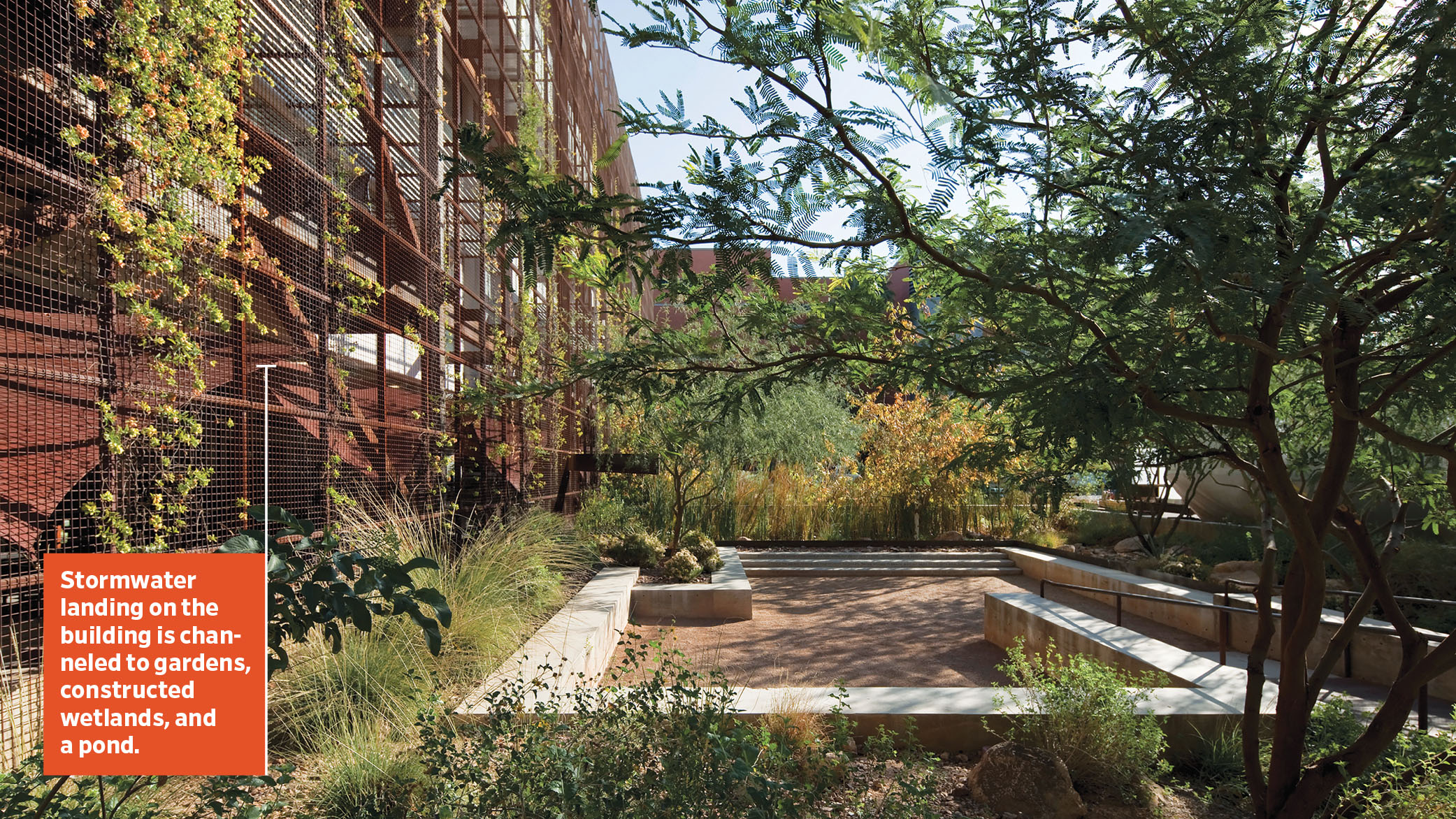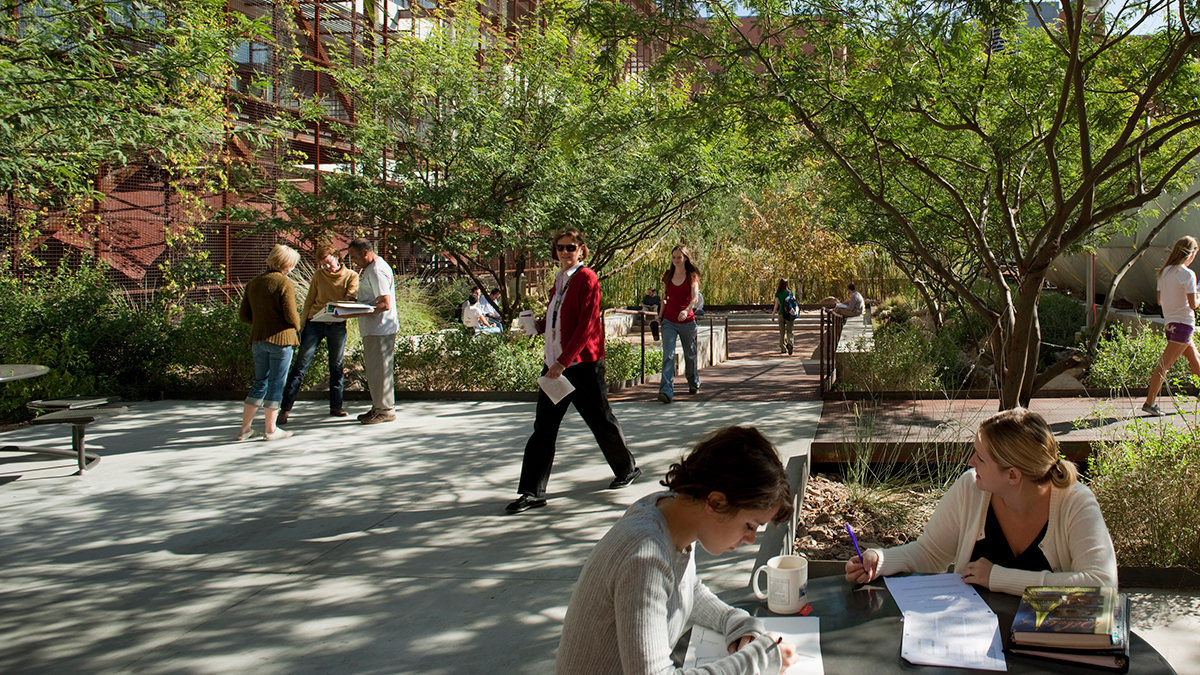
ASLA 2010 Professional Honor Award in General Design, Underwood Family Sonoran Landscape Laboratory, Ten Eyck Landscape Architects/Bill Timmerman.
In 2007, the University of Arizona created a classroom building on top of a parking lot. Ten Eyck Landscape Architects transformed the landscape around the building from a paved grayfield into an outdoor classroom and scenic gathering place for students and professors. The Sonoran Landscape Laboratory collects stormwater runoff from the building in an 11,600-gallon storage tank, which feeds a high-efficiency drip irrigation system that provides water for the landscape’s native plant life. The system harvests approximately 230,000 gallons of water annually, accounting for 83 percent of the water needed. The Sonoran Landscape Laboratory turned a site that generated polluted stormwater runoff into a model of sustainable design, using green infrastructure to retain stormwater and recycle it into the wetlands and native gardens.
Background:
If the storage tank overflows during rain events, water flows into a constructed pond and then an arroyo (river) lined with bioswales. The arroyo soaks up water and lets it flow more slowly through a bioswale planted with native Arizona vegetation before reaching the campus storm sewer. This system mitigates the problems associated with rapid urban water runoff, providing critical detention and filtration while simultaneously nourishing the landscape. The desert arroyo restoration uses recycled materials salvaged from a demolished building and incorporates brick and concrete rubble to construct the swale’s microbasins.
Ten Eyck Landscape Architects’ design also integrates an existing well that required daily flushing for proper operation. This maintenance activity resulted in approximately 200 gallons being expelled into a city storm drain system each day. The flushed well water now diverts into the desert pond to help maintain its water level and add minerals to produce a proper habitat for desert fish species.
The project increases the biomass of the site by 50 percent even with the addition of a new building in an existing urban setting. As part of the teaching garden “laboratory,” five distinct Arizona biomes, which are ecological communities, are now represented. The resulting urban wildlife habitat has attracted many species of birds, mammals, and reptiles. The pond is home for endangered fish and is listed by the U.S. Fish and Wildlife Service as a Safe Harbor urban site.
The cooler microclimate created by the garden has increased opportunities for outdoor learning in a harsh desert environment. The landscape serves as a hands-on laboratory for students to explore natural processes and measure the tangible benefits of sustainable design. An accessible, sunken outdoor classroom of permeable, stabilized granite provides a place for lectures, study, and building projects while detaining water during desert storm events. The laboratory helps students generate innovative strategies for future sustainable designs.
- Underwood Family Sonoran Landscape Laboratory, 2010 ASLA Professional Awards
- Underwood Family Sonoran Landscape Laboratory, Designing Our Future: Sustainable Landscapes, ASLA
- The University of Arizona Underwood Family Sonoran Laboratory, Ten Eyck Landscape Architects
- Underwood Family Sonoran Landscape Laboratory, University of Arizona, College of Architecture, Planning & Landscape Architecture
- At street level, reduce paved areas and maximize incorporation of trees and vegetation supported by healthy soils, including bioswales and rain gardens.
- Maximize use of porous pavement technologies to support natural hydrology.
- Use cisterns for capturing and enabling reuse of excess stormwater for irrigation, etc.
- Prioritize preservation and enhancement of tree canopy.
- Plan “gray” stormwater infrastructure, i.e., engineered systems, thoughtfully and sustainably in concert with natural green infrastructure systems.
- Incorporate water conservation and water reuse technologies in all development and land uses.
- Include reuse/redevelopment of brownfields and grayfields in smart growth plans.

ASLA 2010 Professional Honor Award in General Design, Underwood Family Sonoran Landscape Laboratory, Ten Eyck Landscape Architects/Bill Timmerman.